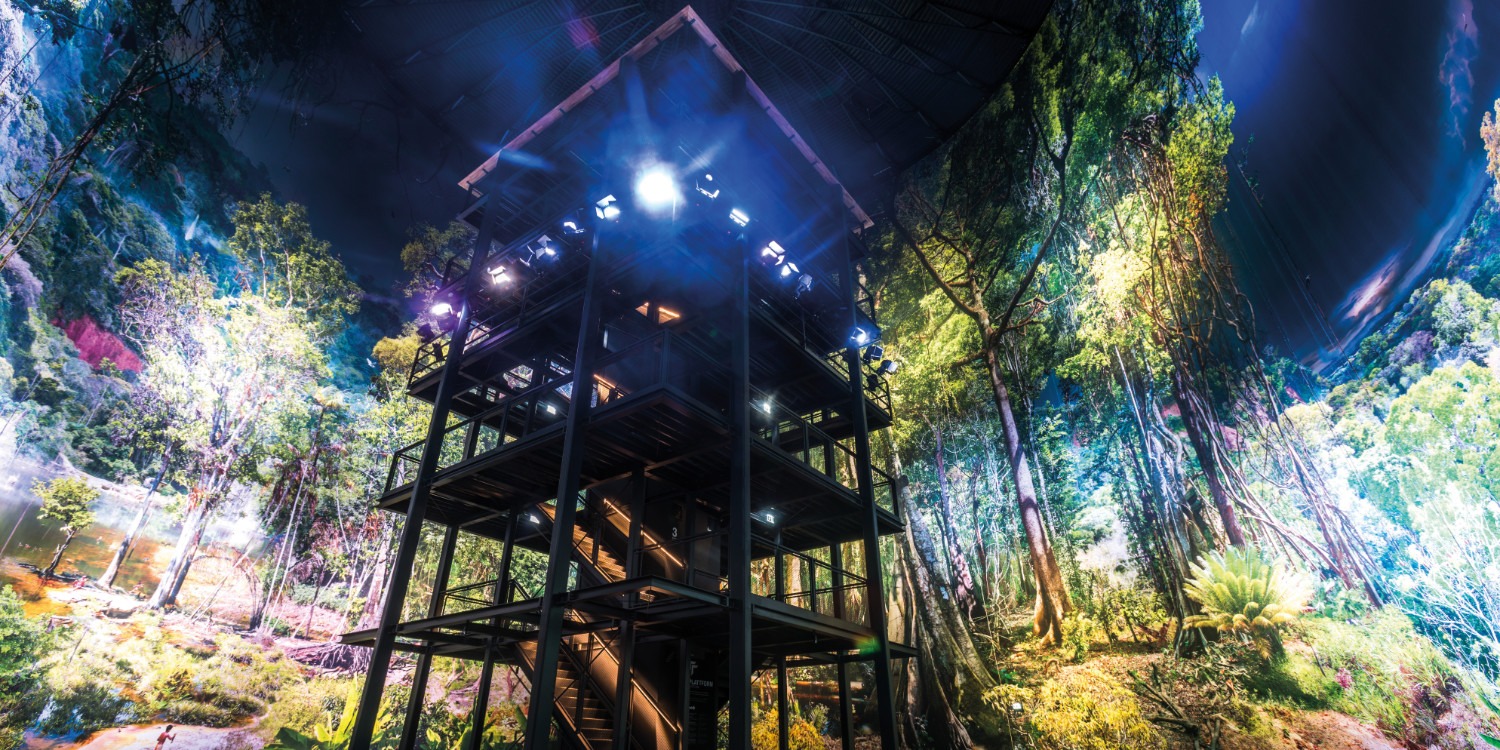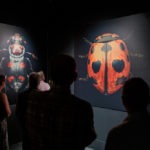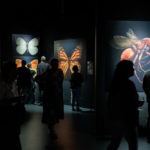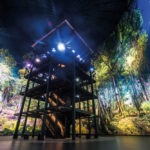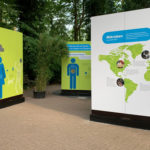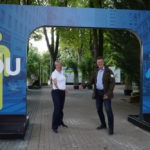Teo: How would you introduce Hanover Zoo to someone who has never visited it?
Andreas M. Casdorff: Hanover Zoo is a scientifically managed zoo founded in 1865 in Hanover, Germany. It houses about 2000 animals (~180 species) in immersive themed environments. Visitors can explore diverse ecosystems, all designed to provide animals with spacious natural habitats. In the themed areas, boundaries between humans and animals become blurred, so that animals appear close and seem close enough to touch. Time and again, the architecture plays on visitors’ natural curiosity and invites them to look around and discover what is hidden.
Being the largest extracurricular learning venue in lower saxony, one of the zoo’s goals is to provide an educational experience for visitors of all ages. Conservation is at the heart of this and all our activities. The zoo participates in over 30 EAZA Ex situ breeding programmes, coordinates 6 of these, and consistently connects its ex-situ conservation activities to in-situ projects, following the One Plan Approach1.
The mission of Hanover Zoo in three words is: education, research and conservation. Education and research are carried out within the framework of conservation. For education, the zoo aims to raise awareness of the threat to species and motivate the public to take action. Regarding research, the zoo aims to contribute to studies that serve conservation. For conservation, the zoo links its animals and ex-situ breeding programmes with selected, promising in-situ projects. All these projects follow the One Plan Approach and consider the needs of animals and humans, and a defined part is dedicated to the conservation of native species.
We present one feature exhibition every year, and our visitors can discover it as part of their zoo ticket.
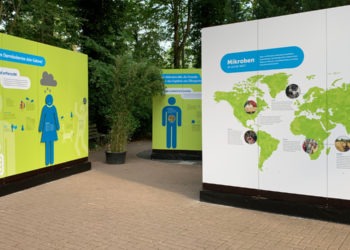
Hanover Zoo has a long story with exhibitions and like-minded experiences. Can you tell us more about the story behind your indoor space?
In order to convey knowledge in a variety of ways, we have been thinking about an exhibition building for several years. Here, various changing exhibitions are intended to impressively present the amazing abilities of the animal world and its adaptation to habitats. In addition to text and images, the didactic concept also includes animal exhibits and interactive engagement stations.
We started with a special exhibition on the topic of Amazonia, which was an amazing experience. We are now delighted to be cooperating with the American Museum of Natural History, with the presentation of Extinct & Endangered: Insects in Peril, a macro photography exhibition by international photographer Levon Biss which makes invisible characteristics visible, bringing to light the unexpected beauty of insects. We also had the pleasure to host Inside You, which invited visitors to take a look inside the body and discover the fascinating world of microbes. We present one feature exhibition every year, and our visitors can discover it as part of their zoo ticket.
How do you select your special exhibitions?
We are a scientifically run zoo. Therefore, we have high standards for our exhibitions and their science. But this knowledge must also be imparted. The visitor does not stay at a station for very long. So, it is a big challenge to prepare the essential information in such a way that the visitor remains curious and can remember some key points. And the whole thing works for both children and adults. Almost an impossible task. But with experience, this balancing act can be solved. We present exhibitions which can do this particularly well. Also, the whole presentation must convey a high-quality impression, sometimes even defying the weather influences in the outdoor area.
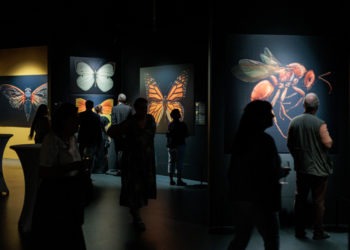
[Exhibitions] are also always a good way to attract the attention of the public and the press, and serve the focus on the stories we tell.
How do you balance exhibitions within your offer (live exhibits, new baby animal, events, etc.). How do synergies operate in programming?
In order to be attractive all year round, we need a rich programme for young and old. It is the variety that makes an all-day experience exciting for the whole family. The experience of a visit to the zoo and the accompanying social and economic success depend on the overall package. The exhibitions make a very important contribution to this. They are also always a good way to attract the attention of the public and the press, and serve the focus on the stories we tell.
The focus is always on our animals. They should be experienced with all the senses. The boundaries between humans and animals must not be visible to the visitor. Exhibitions tend to belong to the quieter areas. However, they are an essential element in our environmental education program. They are incorporated into our offer with special guided tours, especially for school classes. They thus complement our wider offer, which also includes opportunities for relaxation, to keep visitors focused, many playgrounds, the use of multimedia, gastronomic offers, as well as special theme days and many evening events which create additional incentives for visitors.
How do you incorporate special exhibitions into your conservation efforts?
Exhibitions always relate to conservation. They contribute to sharing key messages of conservation with our audiences and help shed light on the conservation efforts developed by our teams. For each exhibition, the dedicated guided tours are opportunities to share further information. These are specially designed for school classes or for adults. In addition, we supplement the exhibitions with a lot of information about the contribution that each visitor can make to the protection of ecosystems in his or her daily life. Wherever possible, we also try to create direct connections with the animals living in the zoo. This also gives the exhibitions a very unique emotional touch.
I am greatly enthusiastic about the collaboration between zoos and other natural history and science institutions, and exhibitions can be a particularly powerful vehicle for this.

Your institution hosts exhibitions that are also presented at science centres and natural history museums. Do zoos have more in common than everyone may think with these organisations?
The similarities are very great. Both are scientifically organised institutions that want to educate in an engaging, entertaining way. At the same time, zoos are very much looking to the future. With their species conservation programmes, they show what is possible and how the future can be shaped. For this reason, I am greatly enthusiastic about the collaboration between zoos and other natural history and science institutions, and exhibitions can be a particularly powerful vehicle for this.
1 Developed by IUCN CPSG, the One Plan Approach (OPA) is a method of species management that develops conservation planning with an integrated approach, with input from all stakeholders involved, focusing on both species inside and outside their natural range.
Exhibitions mentioned
Extinct & Endangered, by American Museum of Natural History
Inside You, by American Museum of Natural History
Links
Extinct and Endangered at the Hanover zoo: https://www.zoo-hannover.de/extinct-and-endangered
Inside You at the Hanover Zoo: https://www.zoo-hannover.de/inside-you

About Andreas M. Casdorff
Andreas M. Casdorff was born in Hamburg in 1964 and grew up in the Hanover region. He studied business administration in Hanover and graduated from Pepperdine University, L.A./California with an MBA. Since 1995, Mr. Casdorff has worked for an international travel group in various management positions. Since 2013 Mr. Casdorff brought his experience from the tourism industry to Hanover Adventure Zoo: "We create unforgettable moments that make a lasting impression and raise awareness. Every day, we motivate people to get involved in the protection of endangered biodiversity. We share knowledge about animals and their habitat and encourage sustainable action".
About the authors & contributors
Teo is the global resource for the international touring exhibitions community. Created for hosts, producers and suppliers of international touring exhibitions, Teo is a global living resource for sharing best practices and fostering new international collaborations in the world of travelling exhibits.


